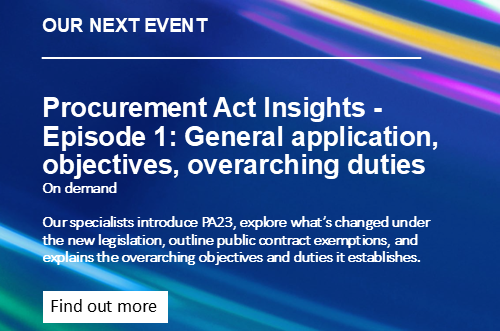- Details
“Just dropping in”: changing large development schemes
![]() It is almost inevitable that large scale developments will be spatially phased in their build out. Flexibility to accommodate a degree of change is needed to enable larger schemes to proceed in a timely manner, argues Rachel Lee.
It is almost inevitable that large scale developments will be spatially phased in their build out. Flexibility to accommodate a degree of change is needed to enable larger schemes to proceed in a timely manner, argues Rachel Lee.
A “drop in” permission, making changes to one part of the larger original development site, is one of the tools used to accommodate a larger scheme’s evolution over time. Going forward, the practical use of such applications will be dependent on an interpretation of the base line of the original planning permission.
Recent case law
In November 2020 the Hillside [1] Court of Appeal judgment (subsequent appeal to the Supreme Court dismissed) held that a planning permission should be seen and implemented in full as an integrated whole, and that the implementation of a subsequent ‘drop-in’ permission on part of the site could render any wider planning permission previous granted as unimplementable in its entirety.
The Fiske 2 [2] Court of Appeal case in December 2023 explains that the planning system does not preclude several applications for planning permission being made for different developments on the same site. The developer needs to address any physical impossibility/inconsistencies (the long established “Pilkington” principle affirmed in Hillside) and consider how best to de-risk a site where there may be two (or a series of) planning permissions.
In January 2024 the High Court case of R (Dennis) v LB Southwark [3] considered the implications of the Hillside Supreme Court judgment on a major phased outline planning permission and looked at what makes a planning permission severable i.e. capable of then being dealt with in phases. The case involved a phase of the regeneration of the Aylesbury Estate (south of the Elephant and Castle, London) The key Dennis findings are:
- where there is no express provision to say that it is severable, a planning permission should not be construed as authorising further development if compliance with that original permission becomes physically impossible. This is all a question of interpretation – can a planning permission authorise a number of independent acts of development or is it construed as a single scheme which cannot be disaggregated?
- The Pilkington principle was confirmed i.e. that “physical impossibility” applies to the development site as a whole, not just to any particular part of the site.
- Any departure from the original permission must be material in the context of the scheme as a whole. What is material is plainly a matter of fact and degree.
The Dennis judgment indicates that for a planning permission to be considered ‘severable’, the subsequent drop-in application itself needs to include an assessment (including in an Environment Statement, if one is required) of individual and discrete development elements on the overall scheme.
Applying all this case law to the facts of an individual large scheme, possibly already under construction in a spatially phased manner, isn’t necessarily easy. Let’s look at a scenario and the issues raised applying the case law:
Dropping in: a scenario
Let’s imagine the situation where a singular outline planning permission (“the original PP”) has been granted for a scheme proposing a new primary school and new residential. There is a phasing plan (showing different plots/areas) of housing and a location specifically for the new school. Neither the planning conditions or supporting documents nor the description of the development are worded to suggest the school and housing are severable parts. The planning committee report gave no consideration to the ability to sever different phases when the committee resolved to grant the scheme. Subsequent to the first housing units being constructed under the permission it is agreed by the local education authority that a new school is no longer required to accommodate the child yield generated from the new residential units to be provided on site. There is no intention to build the new school and the developer makes a further stand-alone application for planning permission for a community centre and some additional housing (“the School PP”) to be carried out in the area shown in the original PP as the school site.
Issues to be considered
Here are some of the legal issues and questions that arise:
- Is there anything in the PP that authorises a series of independent acts, thus making the school severable from the housing, apart from the fact that the original PP obviously involves spatially discrete phases? It appears not from the information above.
- Use of Section 96A Town and Country Planning Act 1990 (TCPA) (non-material amendment)
- It is not possible (see Dennis) to try to “insert” severability of phases into the description of the development authorised by the original PP. Such amendments would be material amendments in the context of the PP scheme as a whole.
- If an application were made under section 96A TCPA for a non-material amendment to change the description of the PP i.e. to remove the school, the LPA would need to consider very carefully whether such an application was in fact a non-material change. To remove the school altogether and propose a community centre and more housing is a change to the overall mix of land uses from that originally evaluated under the PP (as per the planning evaluation report). Is this change non-material in the context of the scheme and the planning policy considered when the PP was originally granted?
- Use of Section 73 (variation and removal of a planning condition/minor material amendment)
- A section 73 application can only be used to amend conditions. It cannot be used to amend the description of the development as set out in the decision notice (as per the Finney case [4] ), so could not be used to remove the school land use from the description of the development in the original PP.
- Therefore, the LPA would need to ask itself whether there any conditions that are capable of amendment under section 73 that would enable the removal of the school site area and the school land use from the PP.
Additional points to note for large developments:
- Developers and landowners really need an overall strategy of how to deal with the build out, if they want amendments to a scheme that include, for example, removal of different land uses. There are strategies that can be adopted to overcome the legal issues described earlier. For example, bringing forward a series of full applications for different parts of the original PP site not yet under construction. LPAs do not want consented schemes to stall so the dialogue and engagement needs to happen between all the relevant parties.
- When considering the “physically impossible” point raised in the Dennis case, developers and LPAs must consider the full site of the base line planning permission and not just the undeveloped parts that are still available for development under the original permission. This issue in itself is not about the ability of constructing development in spatially discrete areas of the original site.
- LPAs need to check thoroughly if there are any aspects of the original planning permission that are critical to the development as a whole, for example access points. An LPA needs to be aware of any incompatibility issues in their dialogue with applicants over any subsequent applications for part of the original large scheme site.
Finally let’s not forgot the many other considerations and implications that need to be looked into, when changes to large schemes are afoot. These include (but are not limited to), CIL charges and when payments are due, modification of s106 obligations to apply to phases, wording of planning conditions requiring discharge and scope for legal challenge of subsequent permissions granted.
Post-election, will the Government bring into force the new section 73B TCPA (in the Levelling up and Regeneration Act 2023) that allows for changes to a planning permission that are not substantially different from the existing permission? [5].This will no doubt be the subject of debate and the scope of the new section, if introduced, could lead to further consideration by the courts. How effective introducing this section would be in practice is one to watch. It surely has limitations for how different/flexible a large scheme can actually be.
Rachel Lee is a Managing Associate at Sharpe Pritchard LLP.
For further insight and resources on local government legal issues from Sharpe Pritchard, please visit the SharpeEdge page by clicking on the banner below.
This video is for general awareness only and does not constitute legal or professional advice. The law may have changed since this page was first published. If you would like further advice and assistance in relation to any issue raised in this article, please contact us by telephone or email
[1] Hillside Parks Limited v Snowdonia National Park Authority [2020] EWCA Civ 1440
[2] R (Fiske) v Test Valley Borough Council [2023] EWCA Civ 1495
[3] R (Dennis) v LB Southwark [2024] EWHC 57 (Admin)
[4] Finney v Welsh Ministers & Ors [2019] EWCA Civ 1868
[5] The new section 73B is not proposed to cover section 73 permissions
|
Click here to view our archived articles or search below.
|
|
ABOUT SHARPE PRITCHARD
We are a national firm of public law specialists, serving local authorities, other public sector organisations and registered social landlords, as well as commercial clients and the third sector. Our team advises on a wide range of public law matters, spanning electoral law, procurement, construction, infrastructure, data protection and information law, planning and dispute resolution, to name a few key specialisms. All public sector organisations have a route to instruct us through the various frameworks we are appointed to. To find out more about our services, please click here.
|
|
OUR RECENT ARTICLES
December 10, 2025
Sharpe Pritchard appointed to £60m London Boroughs’ Legal Alliance frameworkSharpe Pritchard, one of the UK’s leading public law firms, has been re-appointed to the London Boroughs’ Legal Alliance (LBLA) Solicitors Panel.
November 20, 2025
Strengthening the standards and conduct framework for local authorities in EnglandJames Berry offers his insight into how the proposed changes to standards and conduct rules will affect local authorities.
November 04, 2025
Procuring and operating open frameworks under the Procurement Act 2023Chantelle Pink offers advice to authorities on open frameworks and how to procure them.
October 31, 2025
Building Solar – 5 Top Tips for Solar Farm Construction ContractsSolar farm construction contracts are in focus following fascinating insights into the continuing global uptake and expansion of renewables, and particularly solar, within the 2025 mid-year report of Ember, a global energy think tank.
|
|
OUR KEY LOCAL GOVERNMENT CONTACTS
|
||
|
Partner 020 7406 4600 Find out more |
||
|
Partner 020 7406 4600 Find out more |
||
|
Rachel Murray-Smith Partner 020 7406 4600 Find out more |







 Catherine Newman
Catherine Newman
